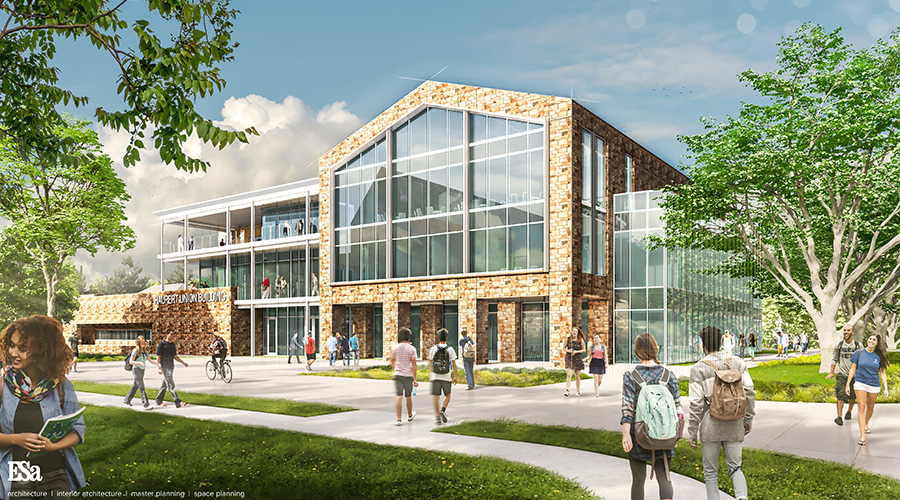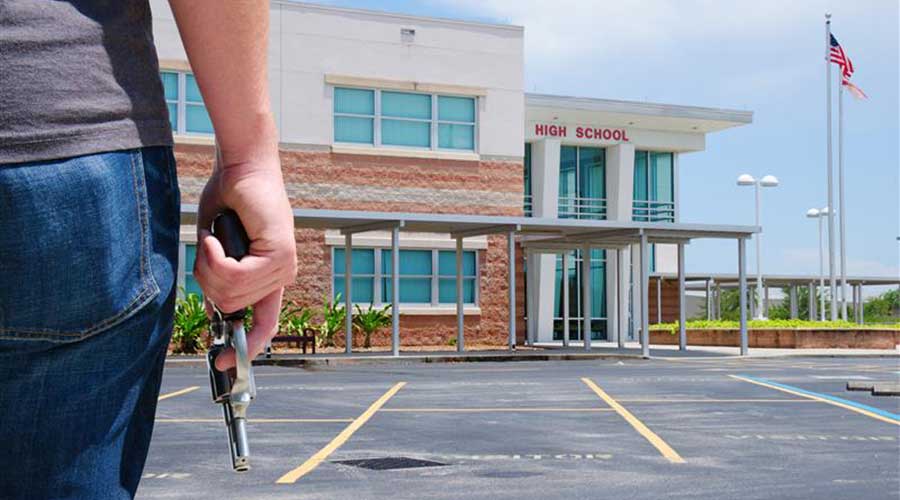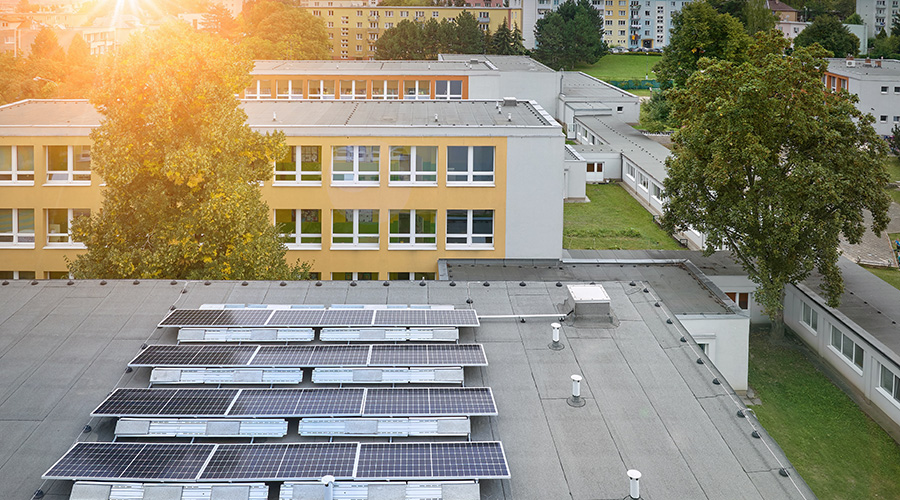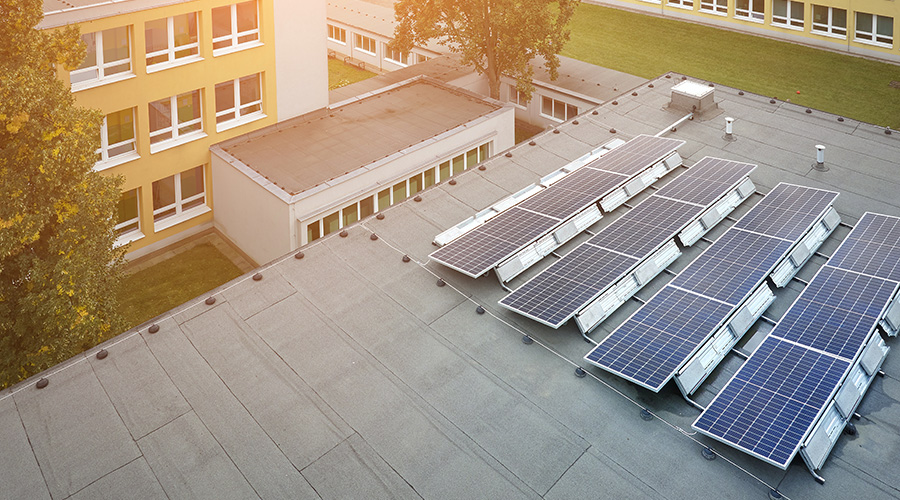Universities Embracing Sustainable, Wellness Initiatives
As college students place more value than ever on sustainable spaces, Pennsylvania university spotlights a new campus center building.
By Annie Celentani, Contributing Writer
Gone are the days of students flowing in and out of unions and gathering halls without a second thought. In fact, sustainability efforts now factor into where some students choose to go to school. Students are calling on leadership at colleges and universities to make the spaces where they spend their time and money more energy-efficient for better health and for the environment.
Moravian University in Pennsylvania is listening to its students. Set to open in Fall of 2025, their new student center, the HUB, has earned WELL Precertification status and is trying to become a leader in the areas of campus wellness and sustainable design.
As college students are becoming increasingly concerned with environmental impact, higher education institutions are under pressure to implement meaningful wellness and sustainability measures that attract the best students, talent, and stakeholders. Moravian University is taking a proactive approach to making sure its most critical community facility is on target.
New-age features
The HUB is one of only two higher education spaces in Pennsylvania to receive the distinction of WELL Precertification. Its environmentally conscious design puts student wellness center stage, while the building’s location conveniently centralizes student support. The HUB features a mindfulness terrace, a resource pantry filled with food and other necessities, a plethora of natural light and more. The HUB stands out by incorporating sustainability measures while thoughtfully anticipating their community’s basic needs.
“People are the heart of our community and ensuring their well-being is essential if we want them to achieve the myriad academic and other goals they set for themselves,” says Greg Meyer, the university’s dean for community wellness.
Wellness and sustainability are top priorities for students, and the HUB at Moravian is checking all the boxes they want to see.
“Adapting to fit student and market needs has been a trademark of the school,” says Michael Corr, Moravian’s executive director of public relations and communications. “Designing the HUB with wellness at the forefront,” he says, is the latest demonstration of the school's commitment to putting students first.
Achieving certification
WELL Precertification provides facilities with an opportunity to showcase health and well-being as primary commitments of their work while receiving scores indicative of what the project could achieve during a full WELL Certification review. A WELL-Certified space like the HUB aims to become flexible, adaptable, comfortable and beautiful while clearly promoting health and well-being.
The WELL Building Standard certification system analyzes 11 key areas, awarding points in each: air, water, nourishment, innovations, light, movement, thermal comfort, sound, materials, mind, and community. Several requirements make up each category. Air has requirements for ventilation and filtration measures, along with volatile organic compound reduction to name a few. Water quality, responsible food production, healthy eating options, strategic lighting designs and sound barriers are just the beginning of the other special considerations that go into meeting WELL standards.
Successful sustainable spaces consider the experience of the people using them. The HUB, for example, offers generous access to nature and natural light.
“One of the hallmarks of this building is its many outdoor spaces,” Meyer says. “Multiple terraces offer opportunities for people to embrace the outdoors without actually leaving the building. … Large windows let in ample light and provide even more connection to the outdoors.”
Integrating energy-efficient features and creating spaces that consider both people and the environment at such high levels has its challenges. From funding, maintenance and permit issues to navigating complicated cultural shifts, the process doesn’t come as easily as the ideas. When seeking WELL Certification, having a range of pre-established resources can help with earning points.
“We were fortunate in that many of the points achieved were for things we were already doing campus wide, and not just related to the HUB,” says Amber Donato, associate director of project management. “Some examples include the offerings in our health insurance policies and mental health services available to staff and students.”
So far, she shares, the HUB has earned the most points in the Mind category, and it has also been awarded a number of points for Nourishment.
Obtaining WELL Precertification requires dedication, patience, and perseverance. The efforts, though, are worth it. Sustainable spaces improve student performance while staff, visitors, and stakeholders benefit from healthier, future-focused spaces as well.
“Students and employees alike experience a variety of stressors, and it is important that we provide ways for everyone to manage their stress productively. Open and accessible mindfulness and prayer spaces are key to creating an optimal work and learning environment,” Meyer says.
The HUB is moving with the times, aligning with student values by taking wellness and sustainability initiatives to new heights.
“The documentation required for the WELL Certification takes a significant amount of time to gather (from staff and stakeholders),” Donato says. For other institutions aiming to improve sustainability and student wellness, she advises being prepared for a large time commitment and leaving room for cultural changes.
Annie Celentani is a freelance writer based in Wauwatosa, Wisconsin.
Related Topics:












